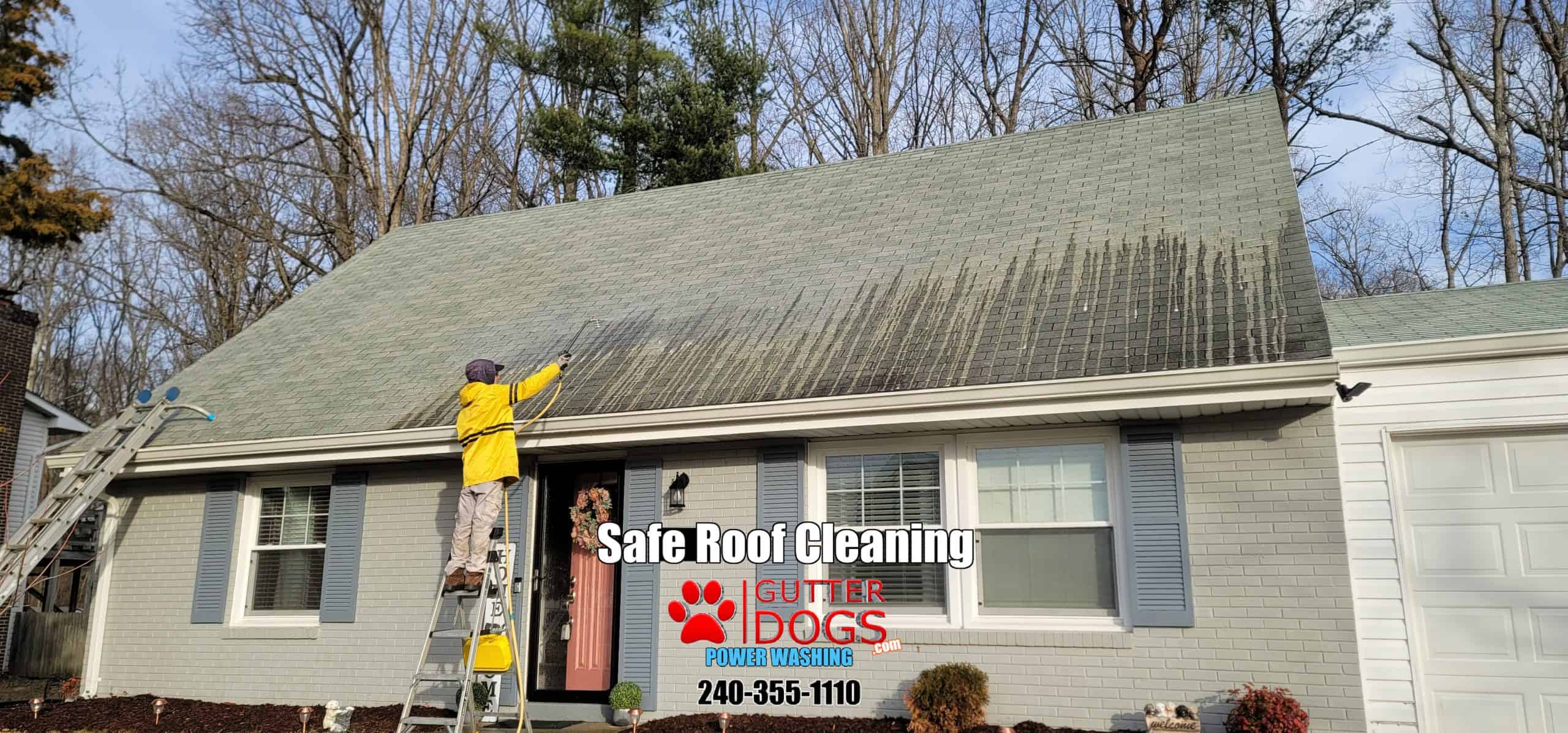Thinking about a roof cleaning in Accokeek Md?
Roof cleaning Accokeek Md just makes sense? It’s more than just curb appeal. It’s the life of your roof as well. These organisms, gloeocapsamagma, GCM, is what the black staining is. Then there is moss and lichens. These organisms are shortening the life of your roof. They are a pest eating your roof. We treat the organisms on your roof as a pest. Cleaning your roof with a proven non pressure method will add years to your roof at a fraction of the price of replacing it!
We are so confident of our roof cleaning method
Your roof will will remain free of organic stains for about 5 years. This applies to whole roof cleanings only. We believe we have cleaned more roofs in Southern Maryland than anyone else. Hire the company that uses the safest method, and the roof cleaning lasts the longest, in writing. We also do other power washing services too. Ask about our package deals. Get it all done in one day!
Here are a few before and after pictures of safe roof cleanings we have done on a house that may look just like yours?
Captain John Smith was the first European to see the Accokeek area when he sailed up the Potomac River.[5] Father Andrew White, an English Jesuit missionary, later visited the Indian village and chief in nearby Piscataway. English farmers and planters settled the area in the late 17th century, and Christ Episcopal Church was established in 1723. Marshall Hall was an outstanding colonial home southwest of Accokeek, in the river bottomlands near Bryans Road.
Henry and Alice Ferguson settled in Accokeek when they purchased “Hard Bargain Farm” overlooking the Potomac River in 1922, as a vacation retreat.[6] Henry Ferguson (1882–1966), an Ivy League-educated man (Harvard and Yale), worked for the Geological Survey starting in 1911.[7][8][9] Alice Leczinska Lowe Ferguson (1880–1951), wife of Henry Gardiner Ferguson, trained as a painter at the Corcoran School of Art in Washington, D.C, and had interests in archeology as well.[10][11] Supposing it to be the site of the Moyaone (or Moyoane) Indian Village in Accokeek visited by Captain John Smith,[12] during his early explorations of North America, in the 1930s Alice Ferguson initiated archeological excavations. She wrote papers on the Piscataway Indians. A recent source states that while the site is probably not the one described by Captain John Smith, it is nonetheless still important.[13] In 1966, the Accokeek Creek Site was made a National Historic Landmark.[10]
Request a Quote











Leave a Reply
You must be logged in to post a comment.